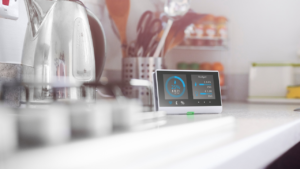Ways to save energy around the home
07 Sep 2021
Decarbonisation

As we all play our part to reduce carbon emissions, there are lots of small changes that we can do around our homes day to day that will make a big difference. Here are some quick and easy ways for tenants to reduce your carbon footprints at home and be kinder to the planet.
Keep your cool
When doing your next load of washing, consider setting the machine to 30 degrees, or even 20. Clothes don’t need a lot of heat to keep clean, so a lower temperature will work fine for freshening them up. If you’re worried about stains, soaking your garments beforehand will make them more likely to come out clean, preventing additional washes.
Turn off standby
Turning appliances off by the wall is a quick and easy way to save energy and lower your bills. Turning off your TV or phone charger sockets when you’re done could save you roughly £30 a year on your bills.
Lights out
A free and easy way to save energy and money is turning lights off when you leave a room, and only turning on the lights you need. Switching your bulbs to energy efficient bulbs will be an upfront expense that will lower your bills in the long run.
Air dry
For many homes, the tumble-dryer is the second most energy consuming appliance after the fridge. After you’ve washed your clothes (at 30 degrees of course!) hanging them outside to dry or using a clothes horse indoors means less energy use and lower bills – and reduces the need to purchase a tumble dryer in the first place.
Use a washing up bowl
Fill up your sink or a washing up bowl with warm soapy water to wash your dishes instead of washing them under a running tap. This not only saves water, but also the energy used to heat the water up.






